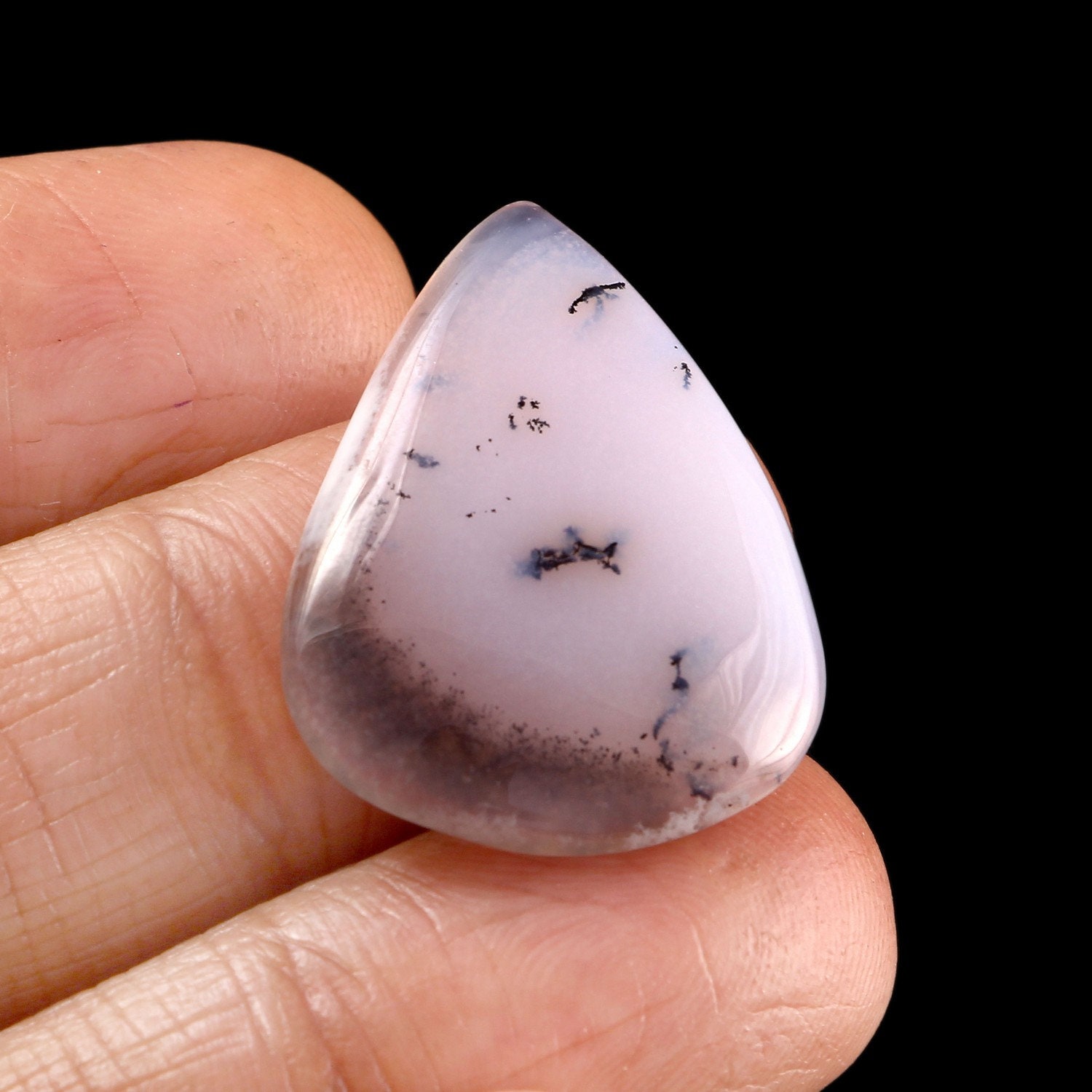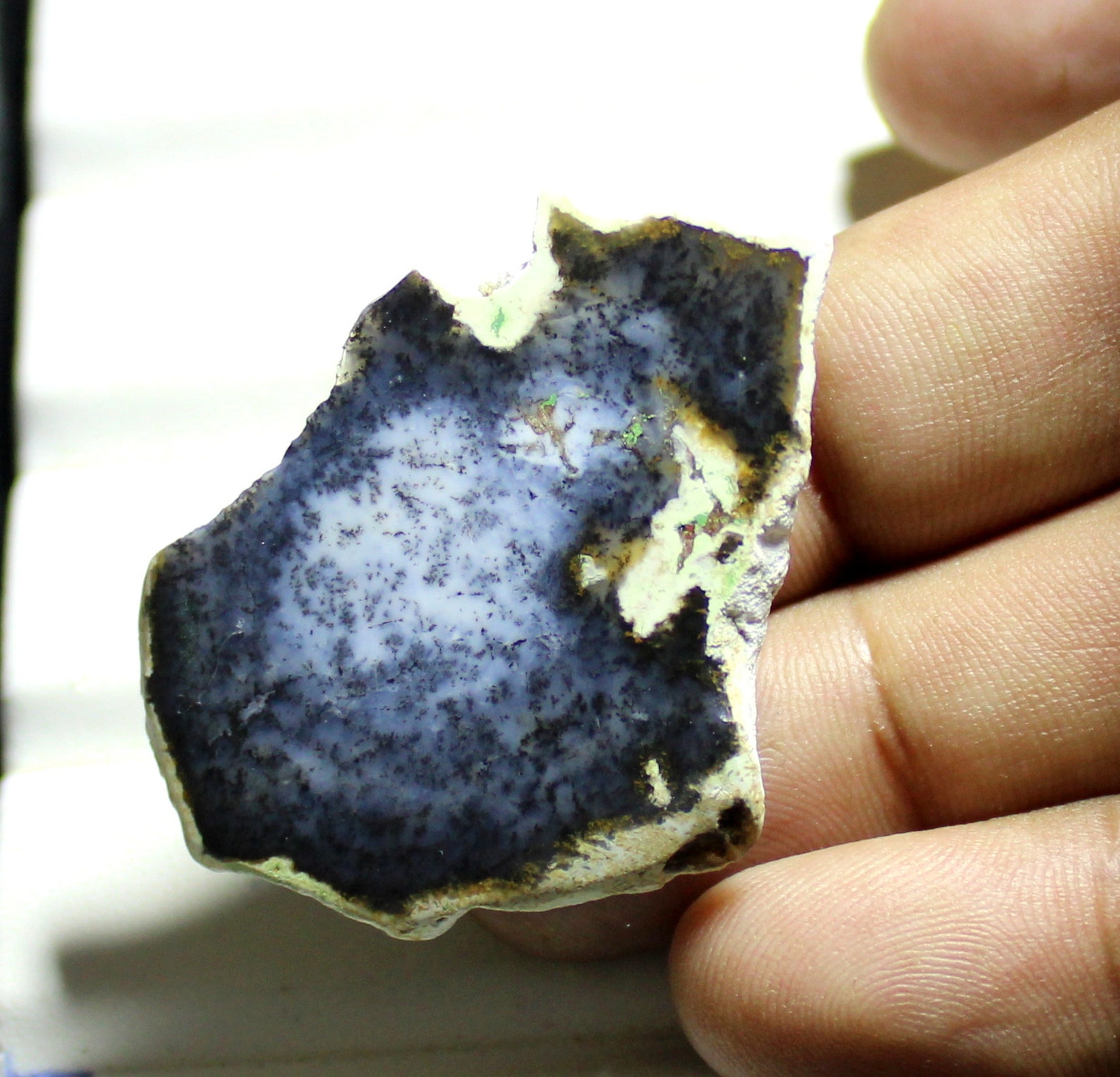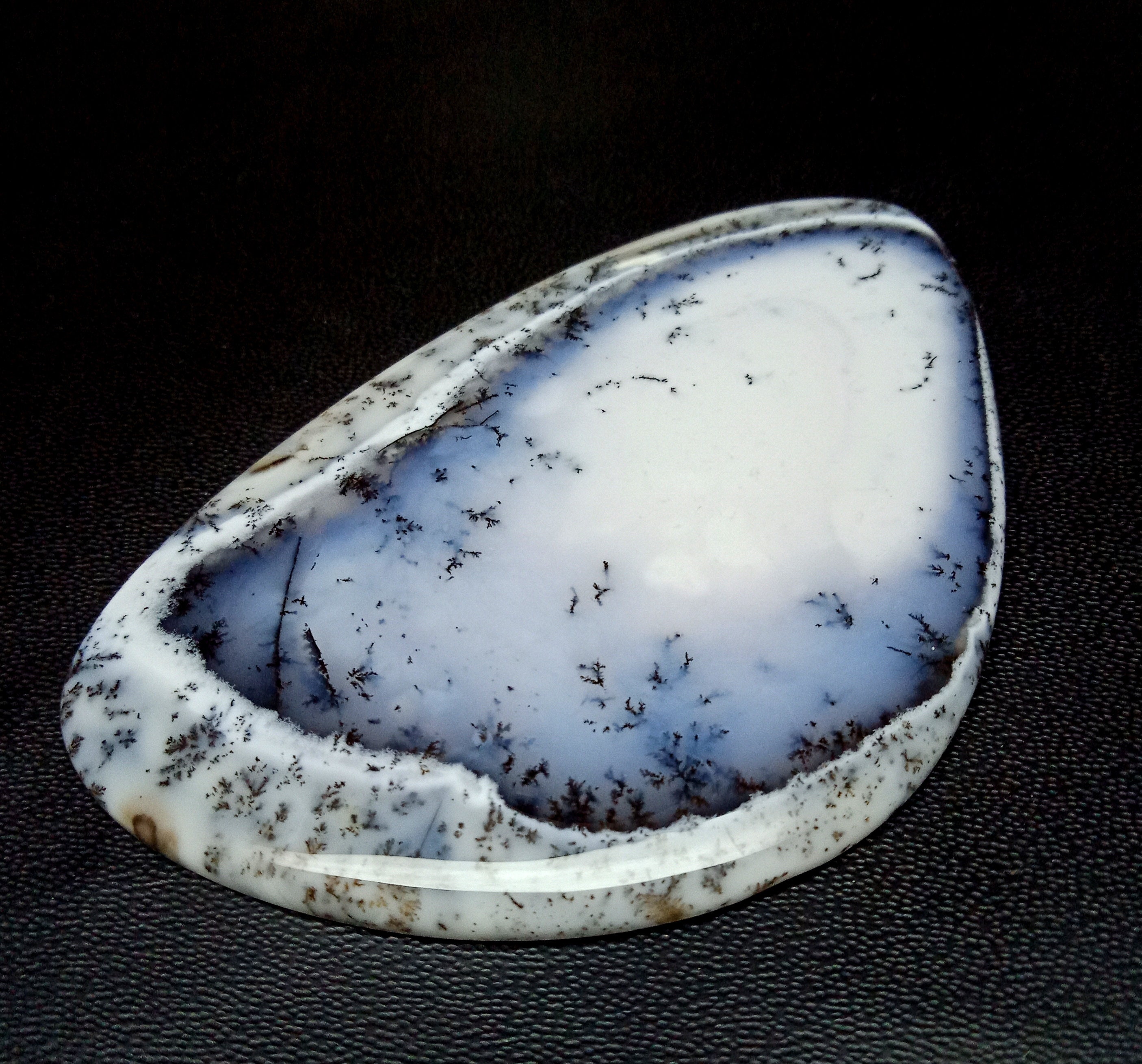

There are two easy tests that you can use at home to find out what you have in your hands. How Do I Tell Dendritic Opal and Dendritic Agate Apart? The differences between the stones are minor, but it’s enough to make them completely different as far as minerals are concerned. Agate is much denser as well, since it has less water, and will feel much heavier in the hand.

Opal is usually from 5.5-6 and agate ranges from 7-7.5 on the Moh’s scale. Still, the hardness of the stones varies considerably. The truth is that there’s not much of a distinction apart from that for most sellers, and an opaque sample may be heavily included agate or opal depending on where it came from. The chalcedony in dendritic agate can be quite opaque, but transparency is the best way to tell. Doing so merely by visual identification is sketchy at the best of times. Still, the stones have a few tell-tale qualities that you can use to tell them apart. Amorphous silica is separated largely by its moisture content and transparency. The biggest difference is in the moisture content of the silica primary mineral of the stone. Fortunately, there’s no need to guess if you have the sample on hand. The name is used almost interchangeably in the crystal trade, where you also have to deal with marketing names like “Merlinite” when trying to figure out what a specimen is.

Some opal contains significantly more water, but it’s rarely seen in cut form. While most opal sits at roughly 4-10% moisture, agate only has 0.4% water in its makeup. The biggest difference in the base composition of the stones is the percentage of moisture. It gets even testier when you realize that both of these stones are largely made of silica, and the dendrites can even be comprised of the same metallic oxides! That said, if a stone is opaque then it’s most likely an opal, while a crystal-clear stone with dendrites is inevitably a dendritic agate. I’ve seen both labeled as the other, and with some samples, you can’t really tell without it in your hand. Related: Red Agate vs Carnelian How Are They Similar?Ĭonfusing these stones is pretty natural, and the majority of pictures online don’t help either. While this is sometimes considered the distinguishing feature of agate, the truth is that heavily included chalcedony inevitably gets called agate (ie: moss agate, plume agate) if it displays transparency. These stones are usually referred to by their specific name (ie: dendritic carnelian) instead of being lumped in as dendritic agate.ĭendritic agate, like many varieties of included chalcedony, has no bands. Some colored varieties of chalcedony, such as carnelian, also bear dendrites on occasion. Finding bits with pieces of orange or blue chalcedony in the same piece isn’t uncommon, and some of these pieces allow for the cutting of astonishing landscape cabochons. Related: Agates: Ultimate Guide To Collecting Agatesĭendritic agate often mixes with other colors. The main appeal for most collectors is simple: the transparent nature of chalcedony allows you to see the dendrites in all three dimensions. Since dendritic agate is a silica-based gemstone it’s very hard and often occurs alongside other silicate minerals when found. Because of that, the value of specimens ranges very far.

Each bit of dendritic opal tells its own story of mixed metals and silica, no two are exactly alike. In that case, it’s a misnomer.ĭendritic opal is commonly made into cabochons for jewelry or face-polished for specimens. The term is sometimes used interchangeably with iridescence to describe the fiery play of precious opal. Common opal usually has a “glow” which is the strict definition of opalescence. The latter is usually described as an opaque opal with no play of color. These branch-like forms grow through the stone and are revealed in striking patterns after the rough material is cut.ĭendritic opal is not a form of precious opal, with its fiery way of capturing light. The dendrites themselves are made of metallic oxide inclusions. Related: Opal: Ultimate Guide To Collecting Opal It often has a blue tint around the edges of a nodule, and sometimes even blue specks. The majority of dendritic opal is a milky white color. Dendritic opal has black “dendrites” running through it, which are actually mineral inclusions that appear tree-like. Opal is a hydrated silica mineral, containing between 5-21% water in addition to silica and the various impurities that add color.


 0 kommentar(er)
0 kommentar(er)
